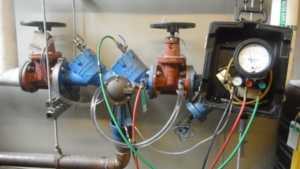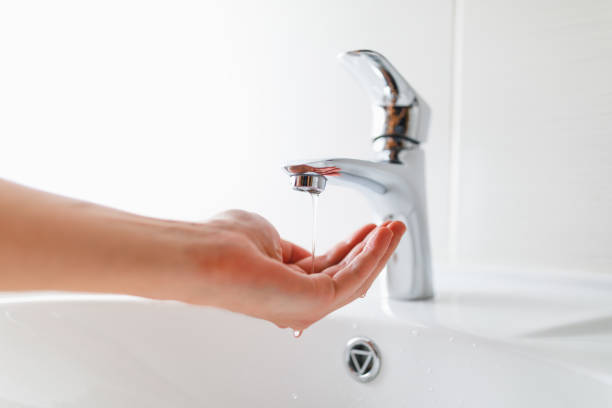Understanding Well Systems:
Before we jump into the solutions, it’s imperative to have a basic understanding of how well systems operate. Well systems typically consist of a well pump, pressure tank, and various pipes that deliver water from the well to your household fixtures. The well pump is responsible for drawing water from the well and sending it to the pressure tank, where it is stored until needed. When a tap is opened, the pressure tank releases water, maintaining a consistent water pressure throughout your plumbing system.
Common Causes of Low Water Pressure in Well Systems:
- Clogged Pipes and Screens: Over time, well pipes and screens can accumulate sediment and debris, leading to clogs that restrict water flow. This is a common culprit behind low water pressure in well systems.
- Faulty Pressure Switch: The pressure switch is a critical component that signals the well pump to start or stop based on the water pressure in the system. If the pressure switch is malfunctioning, it can result in inadequate water pressure.
- Waterlogged Pressure Tank: A pressure tank that is waterlogged loses its ability to maintain proper pressure levels. This often occurs when the tank’s air bladder is damaged or has lost its air charge.
- Well Pump Issues: The well pump is the heart of the system, and any problems with it can significantly impact water pressure. Issues such as a worn-out pump, a malfunctioning control box, or a failing motor can contribute to low water pressure.
- Well Water Levels: The water table around your well can fluctuate, affecting the well’s ability to provide an adequate water supply. Seasonal changes and drought conditions can impact well water levels, leading to lower water pressure.
Solutions to Fix Low Water Pressure:
- Inspect and Clean Pipes and Screens: Begin by inspecting the well pipes and screens for any signs of clogging. Sediment and debris can accumulate over time, impeding water flow. Regular maintenance, including flushing the system and cleaning screens, can prevent this issue.
- Check and Adjust the Pressure Switch: Ensure that the pressure switch is properly adjusted to the recommended settings. You can consult your well system’s manual or seek professional assistance to calibrate the pressure switch for optimal performance.
- Recharge or Replace the Pressure Tank: If your pressure tank is waterlogged, it’s essential to recharge or replace it. To recharge the tank, turn off the power to the well pump, drain the tank, and then set the air pressure to the recommended level. If the tank is irreparable, consider investing in a new one.
- Inspect and Test the Well Pump: A thorough inspection of the well pump is crucial. Check for any signs of wear, damage, or corrosion. Additionally, test the pump’s performance by measuring water output and pressure. If the pump is faulty, consult a professional for repairs or replacement.
- Monitor Well Water Levels: Keep an eye on the well water levels, especially during periods of drought or seasonal changes. If you notice a significant drop in water levels, it may be necessary to deepen the well or explore alternative solutions with the guidance of a well system professional.
Conclusion:
In the realm of well systems, troubleshooting and addressing low water pressure require a systematic approach. By understanding the components of your well system and recognizing common issues, you can take proactive measures to ensure a reliable and consistent water supply. Regular maintenance, timely repairs, and professional assistance when needed are key elements in maintaining optimal water pressure in well systems. So, the next time you encounter the perplexing issue of low water pressure, approach it with confidence, armed with the knowledge and solutions provided in this guide. A well-maintained well system is not just a source of water; it’s a testament to your commitment to a smoothly functioning household. In situations where complexities like backflow arise, seeking the services of a professional  provider becomes crucial for maintaining the integrity of your well system and ensuring the safety of your water supply.
provider becomes crucial for maintaining the integrity of your well system and ensuring the safety of your water supply.

